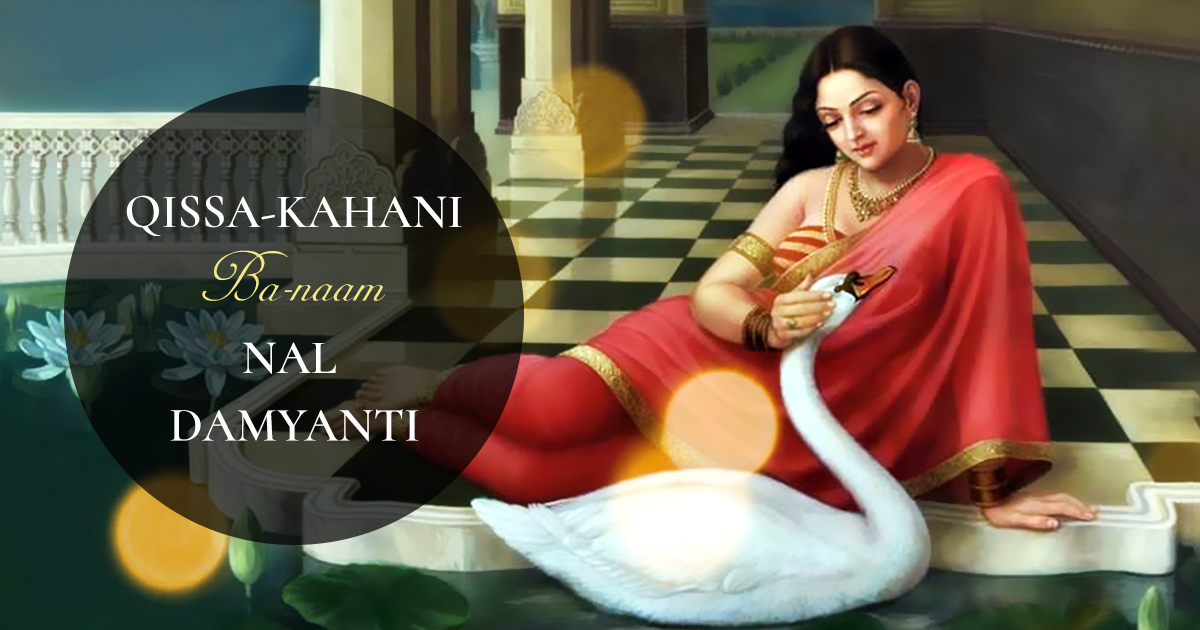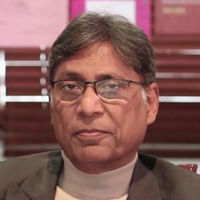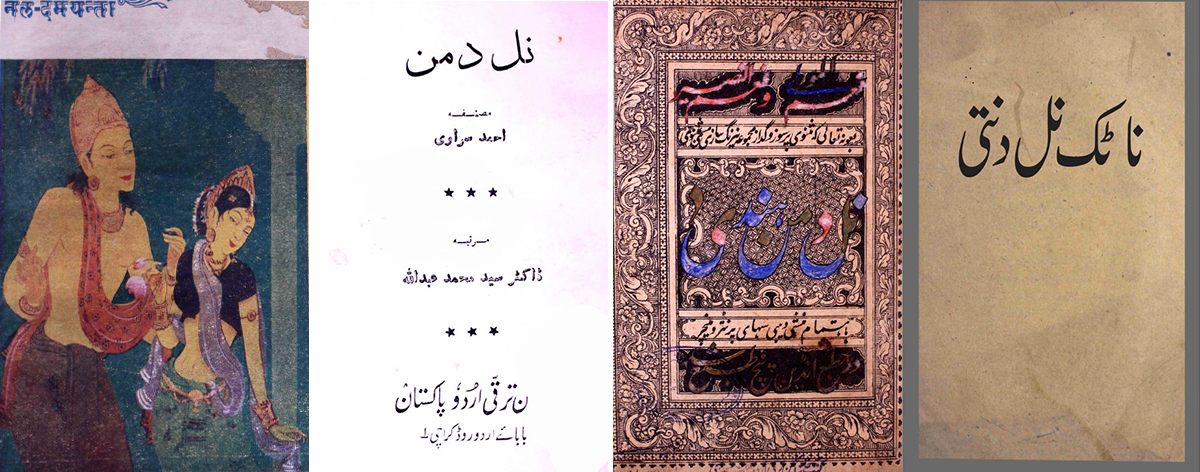
Qissa-Kahani: Ba-naam “NAL DAMYANTI”
Nal and Damyanti: An imperishable story of love, suffering, union.
Traced back to antiquity, that is even before the Puranas, this story was narrated for the sake of entertainment during the exile of the Pandavas.
Legends, myths, folklores, sagas, tales, stories! These are the various names that spell out our imagined and real lives in multiple ways. They bear witness to the cultural variety of a land and its people. As they impact lives, poets and authors pick them to reconfigure afresh in their own ways and enrich the literary capital of their languages. Here is the story of Nal and Damyanti that leaves us awe-struck. It has stayed with us in various forms–as written texts, oral narratives, and dramatic representations ever since it was told in the Mahabharata by Ved Vyas.
Nal, the son of Veerasena, was king of Nishadha kingdom. A scholar of the Vedas, he was remarkably handsome, healthy, courageous and a charioteer extraordinary. He had but a habit of playing chausar that proved a tragic flaw of his character and tested him through a terrible phase of his life. Equally endowed in many ways was a ravishing beauty called Damyanti, the only daughter of king Bheem of Vidarbha. Nal came to hear of Damyanti’s beauty just as Damyanti came to hear of Nal’s qualities. As it happens in dreams, both fell in love even without seeing each other. To turn their love story in reality, a kind swan came to play an important role. It carried the story of Nal’s longing to Damyanti who was already inflamed by her love for Nal. As both kept exchanging their tales of longing through the swan, their love grew deeper with each passing day.
This was the time when King Bheem decided that Damyanti should choose her husband in a swayamvar. Hundreds of suitors including princes and kings reached Vidarbha to try their luck. Nal too was one of them. The four gods–Agni, Inder, Varun, and Yum–also reached there as aspiring suitors. On the way, they ran into Nal. They ordered him to tell Damyanti to choose one of them, or else face the consequences. On reaching Vidarbha, he did as commanded although with a heavy heart. Already in love with Nal, Damyanti had none else to choose but only him. On sensing this, the four gods disguised themselves as Nal. When she saw them bearing the same face as that of Nal, she got terribly confused. She prayed to God and true love showed her the way and she rightly reached Nal and garlanded him

Damyanti praying to God
Interestingly, demon Kali who too had to take part in the swayamvar, reached there a little late. On seeing that Nal had already been chosen, he felt terribly jealous and burnt with anger. He thus took a vow to wreak his revenge on Nal. In the meanwhile they were happily wedded and started living a life of comfort in Nishadha. They also gave birth to a son who was called Inder, and a daughter who was named Indra.
A few years later, Kali instigated Nal to play chausar with his brother Puskhar. Sure about his expertise in playing chausar, he staked his kingdom in the game. Since the game was played under the spell of Kali, Nal lost even though he was a great expert and had never known defeat earlier. This defeat proved fatal. Nal lost his kingdom and became a homeless pauper. Pushkar announced that none should offer him a refuge. Nal had no choice but to leave Nishadh. Damyanti kept him company in this terrible hour and both moved towards a forest for a refuge. Both suffered immeasurably. Nal found it difficult to bear the pain that Damyanti was passing through. Since he was under the impact of Kali’s curse, he could not help but left Damyanti while she was asleep. When she woke up and did not find Nal around, she went looking frantically for her all over the forest. Her long search for Nal proved futile but she could fortunately find a refuge in the court of King Chedi from where her parents brought her to their home.

Damyanti sleeping in the jungle with Nal by her side
Nal kept wandering aimlessly. During his going from place to place, he happened to see a snake surrounded by fire and helped it out of fire to save its life. However, strangely enough, the snake bit him. This turned him into a black and dwarf human being. Seeing Nal in pain, the snake told him that it was only for his good that he has been bit and his appearance has been changed. He was also told that his stars were bad and this ugly appearance will save him from all calamities in future. The snake told further that when his stars will turn favourable, its poison will turn ineffective automatically. With this changed appearance, Nal found an employment with king Rituparan of Ayodhya. He served him personally and drove his chariot.
On the other side, when Damyanti reached her home, she sent her men all around to look for Nal but all in vain as Nal, in his different appearance, was unrecognisable. After a long time, she came across an intelligent Brahmin who shared his doubt with her that the king’s charioteer was none else but Nal himself. Damyanti wanted to test this doubt and she invited the king on the false pretext of swayamvar to win her hand. Intelligently enough, she gave him a very short time to cover the distance and reach her. This was a distance no charioteer could traverse within the given time except Nal who was a charioteer par excellence. As the king Rituparan himself had extraordinary expertise in mathematics and chausar, he kept teaching Nal of the fine points of these during the journey. Feeling obliged, Nal showed his skill as a charioteer to the best of his capacity and reached him to Vidarbha before the dawn.

Nal driving a chariot
On finding that the suitor had actually reached there well in time, Damyanti’s doubt was further strengthened. But as Nal was dwarf and black, she needed to confirm her doubt further. She played a fine trick and confirmed her doubt finally when she arranged to taste the food cooked by Nal who knew the art of cooking and practiced it only too well. There was nothing else to inquire further and Damyanti finally recognised her Nal. The two lovers, separated for long, became one once again after a long ordeal of all kinds. This is when Nal followed the method told to him by the snake to get rid of his ugly appearance and regain his real identity.
This is also when Damyanti’s father sent a huge force to wage a war against Nal’s usurper brother Pushkar so that Nal could claim his lost kingdom. On reaching Nishadh, Nal invited Pushkar for a game of chausar. This time he staked Damyanti to win back his kingdom. Since Nal had already matured in the art of this game from Rituparan, he won the game easily. Pushkar accepted his defeat and repented for what he had done to his brother. He sought to be forgiven. Nal behaved sympathetically with him, gave him gifts, and allowed him to go back to his village. Nal and Damyanti got their lost glory and lived happily ever after ruling over Nishadh.

Nal and Damyanti when they ultimately meet
Traced back to antiquity, that is even before the Puarnas, this story was narrated for the sake of entertainment during the exile of the Pandavas. It has stayed with us through all these ages in several versions and in several languages like Sanskrit, Hindi, Urdu, English, French, Swedish, Polish, Greek, Hungarian, and many more. Kalidasa, Sri Harsh, Surdas, Norman E. Penzer, Sister Nivedita, Bopp Franz, and Ruckert, Buhler, and Monier Williams are some of the most prominent ones who told and re-told this story with great gusto. It is also included in Katha Sarit Sagar which is a great storehouse of stories.
In Persian, this story was first written by Faizi at the asking of Emperor Akbar who liked it immensely. He used to order Naqeeb Khan to read it aloud to him and even ordered the artists and calligraphers of his court to produce its illustrated version. In Urdu, Ilahi Bakhsh Shauq produced a version in 1802. It was rendered by Gauri Shankar, Vinayak Prasad, Mirza Nazeer Baig Akbarabadi, Mir Niaz Ali Dehlavi, Bhagwant Rai Rahat Kakorvi, Mir Ali Bangali, Ahmad Sarawi, Ahmad Ali, Kali Prasad, Syed Ali Akbar Khan, Bhola Nath Faragh. In Haryanavi, this story was told by Mitthun Lal Chunni Lal, and Pandit Mauji Ram Shiv Chand. The process continues till this day and it is kept alive by new authors in several Indian languages. All these versions bear out the appeal of this imperishable story of love, suffering, and union.
NEWSLETTER
Enter your email address to follow this blog and receive notification of new posts.





